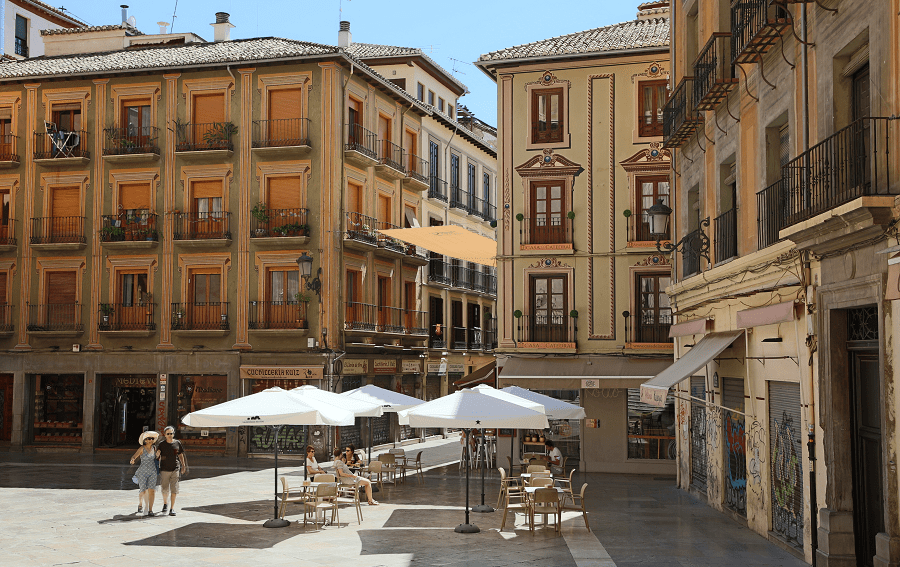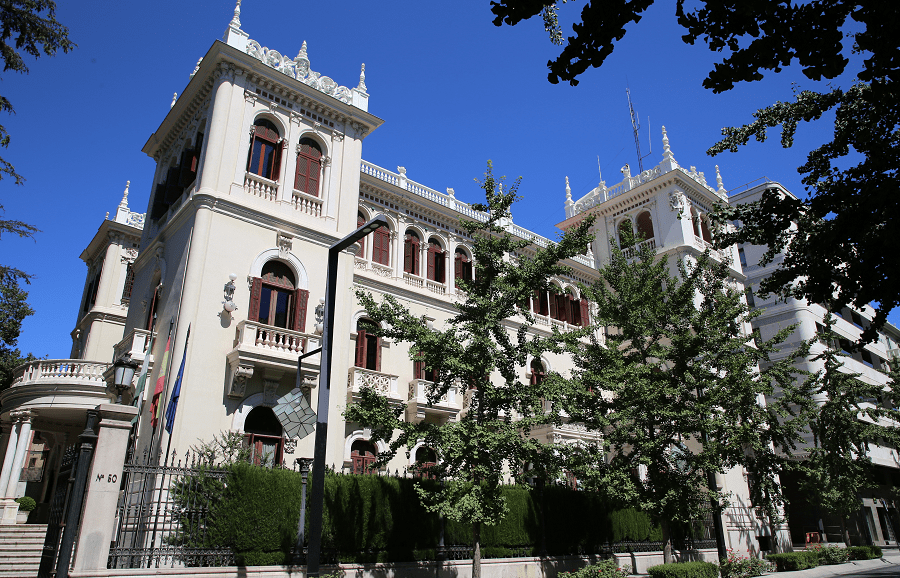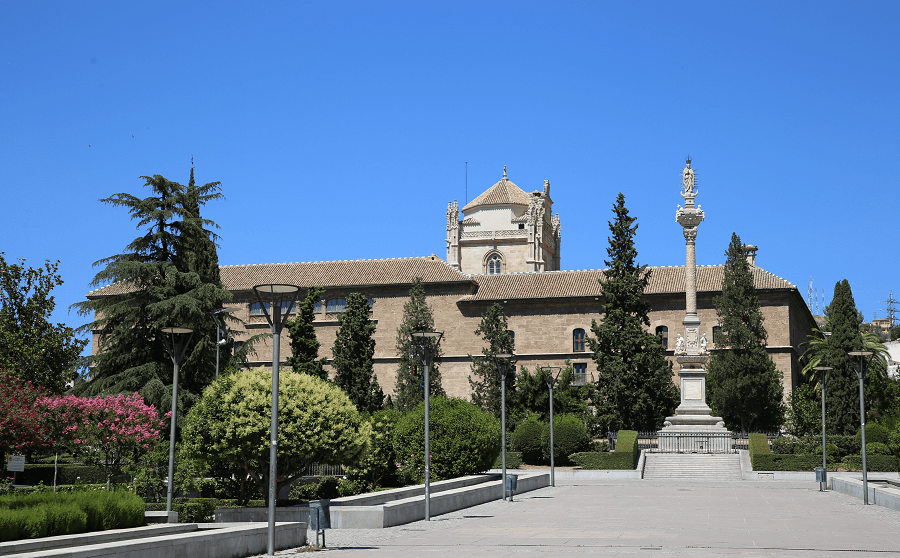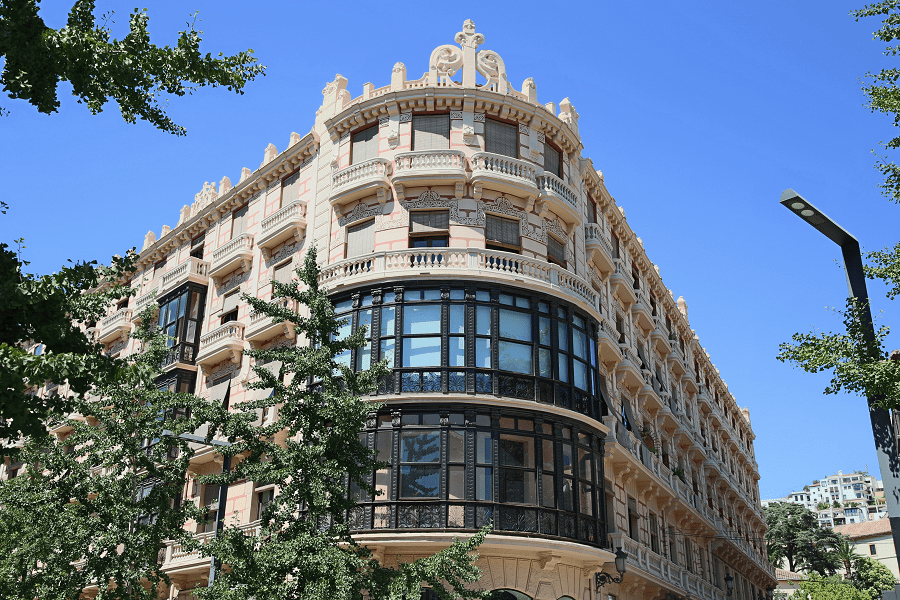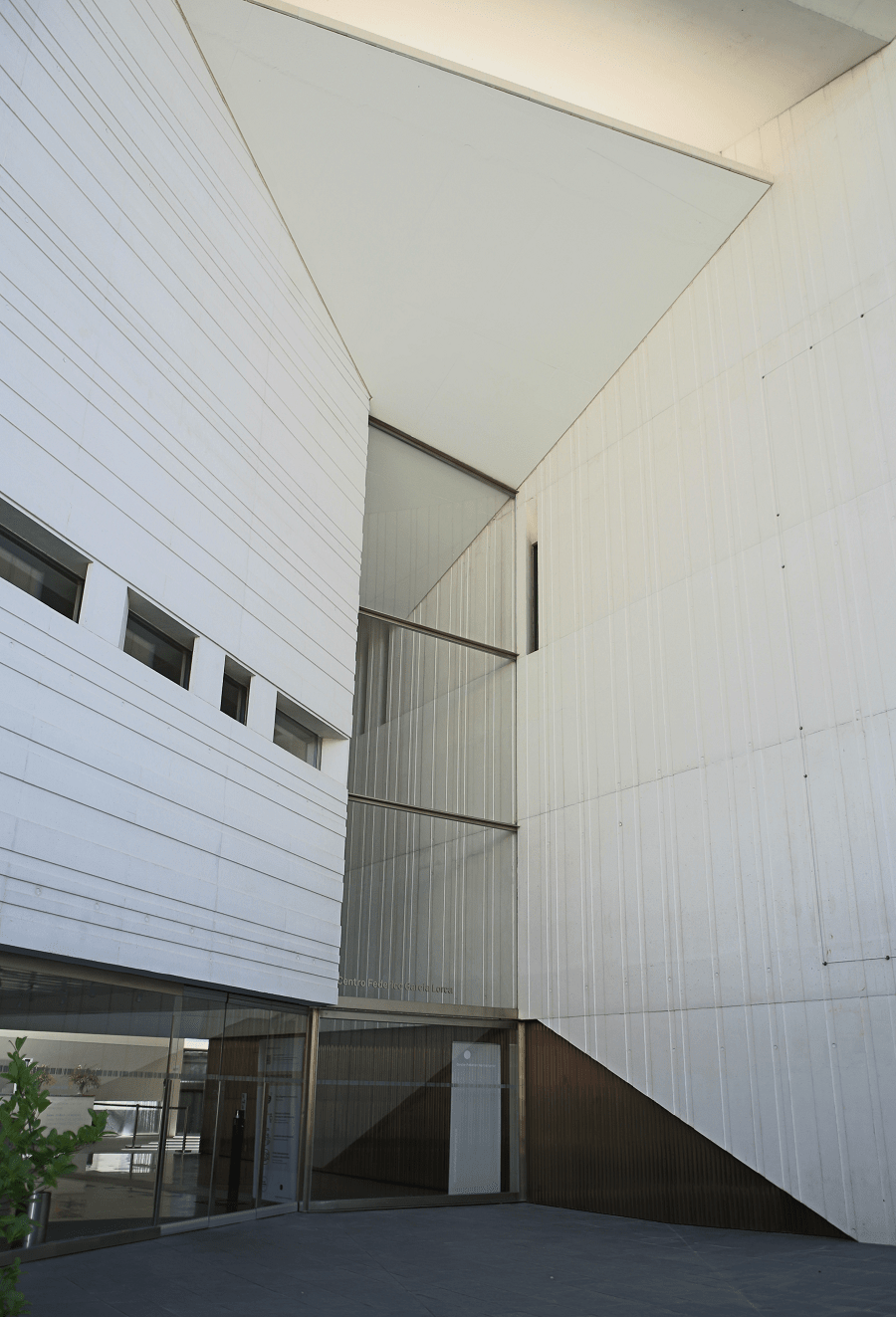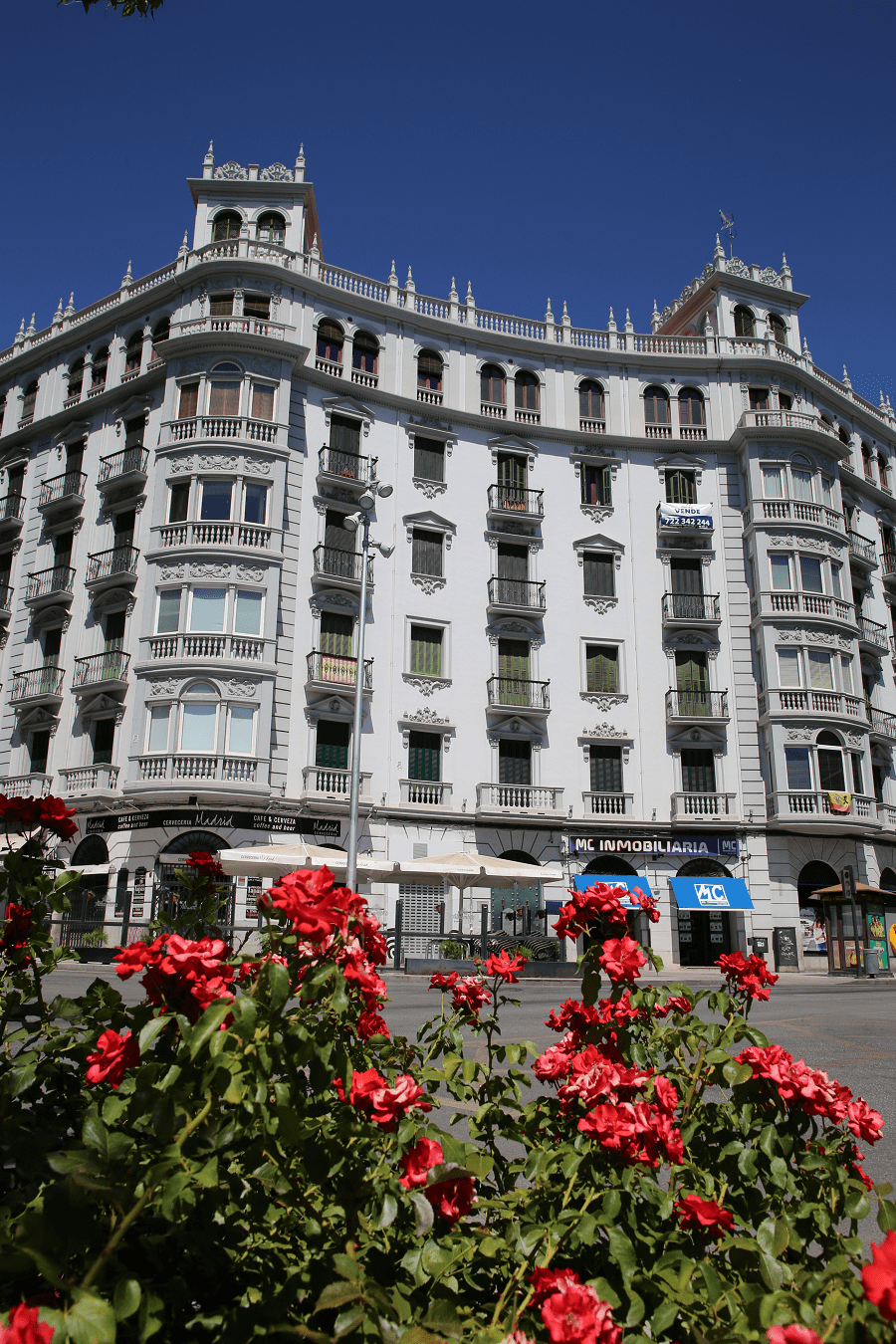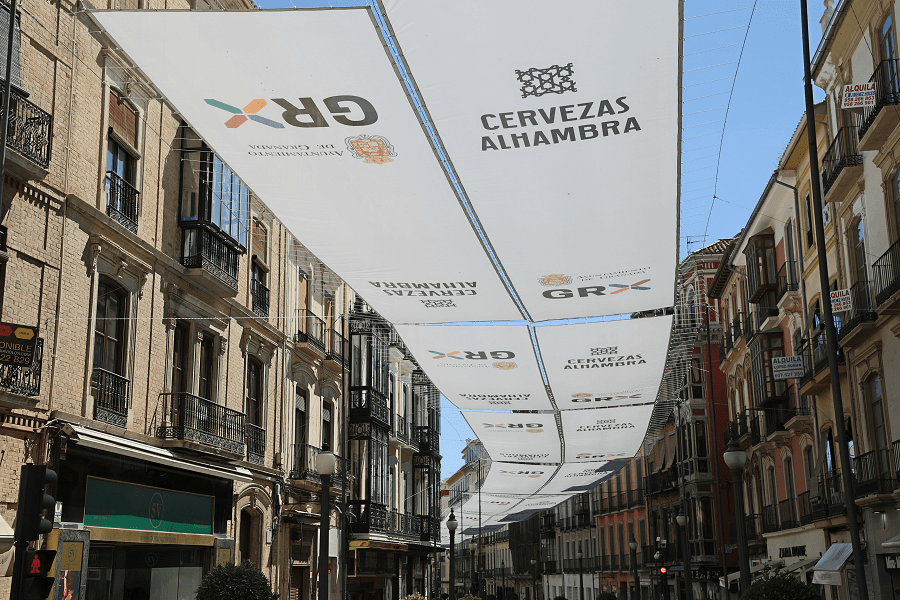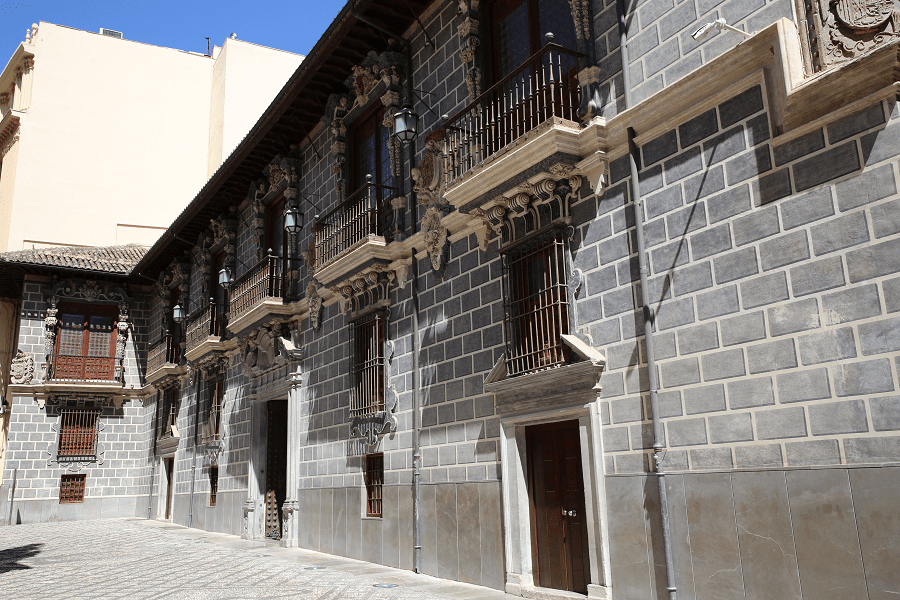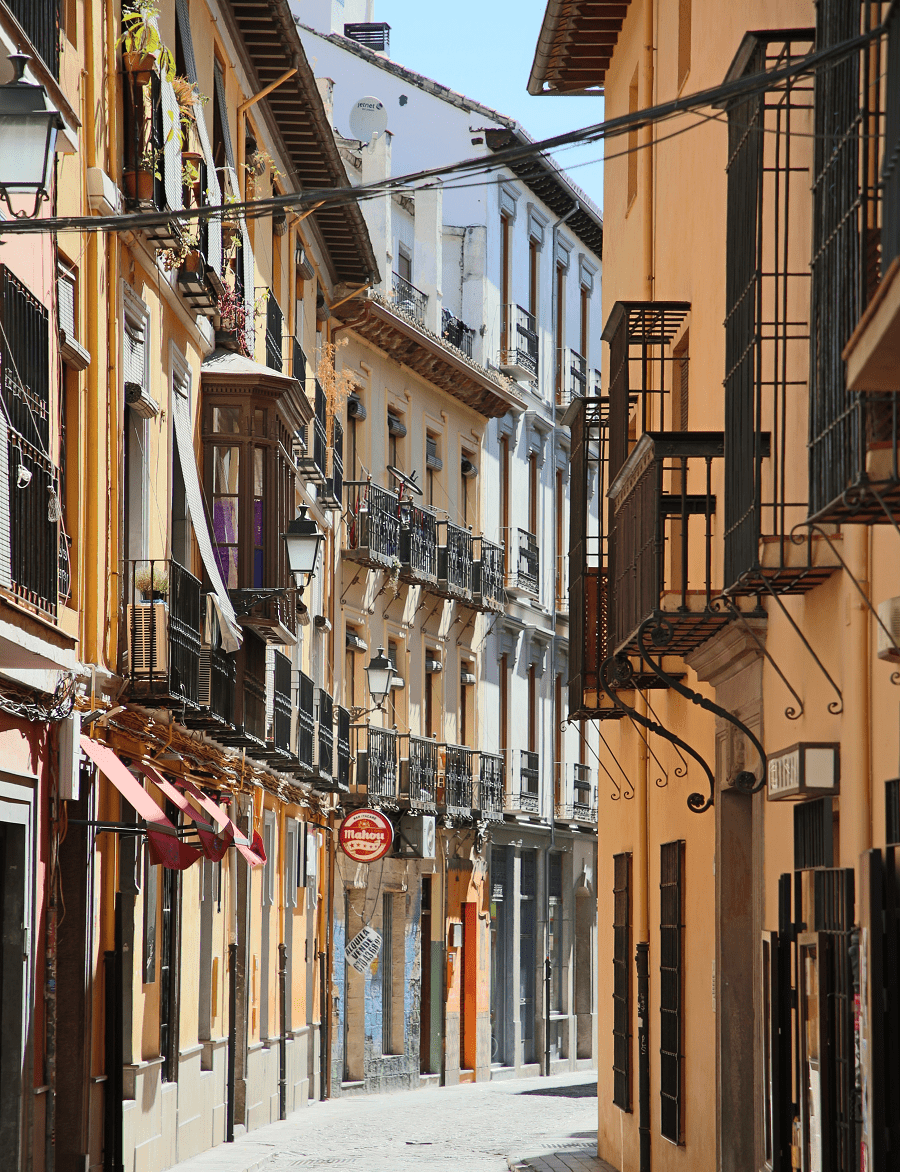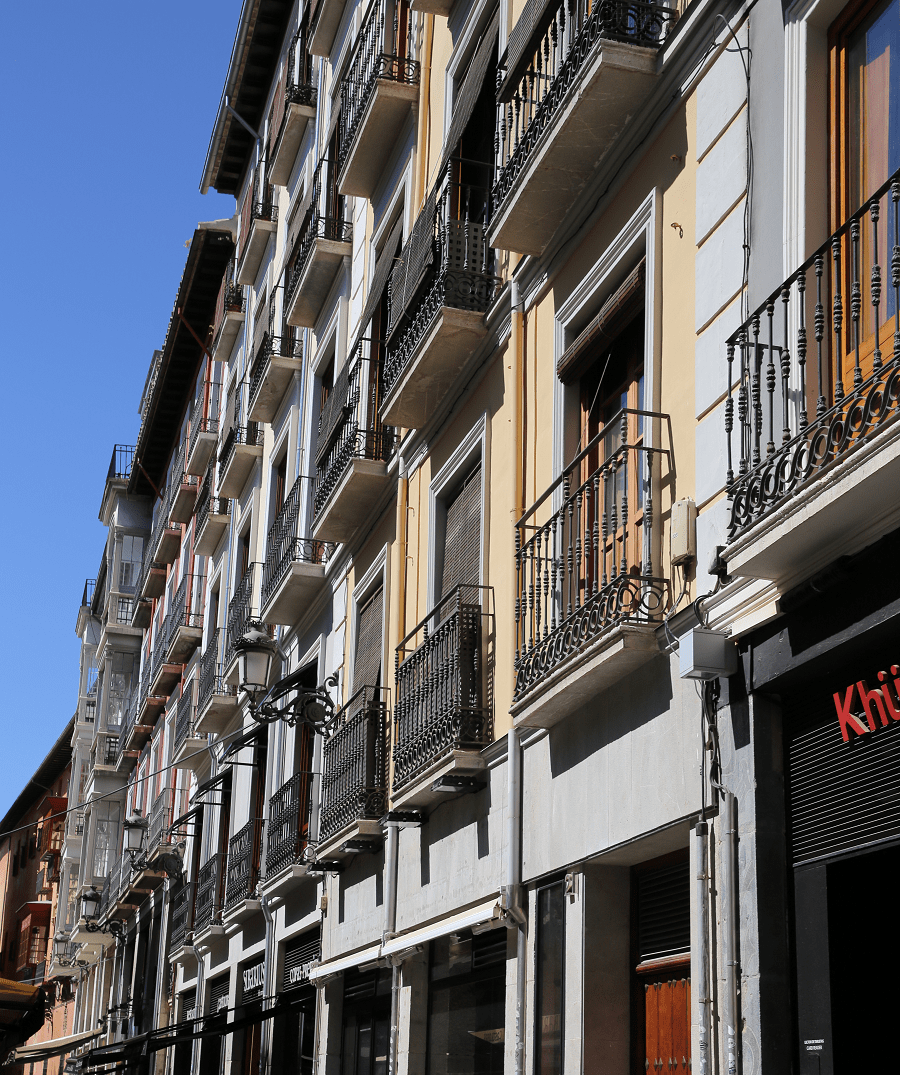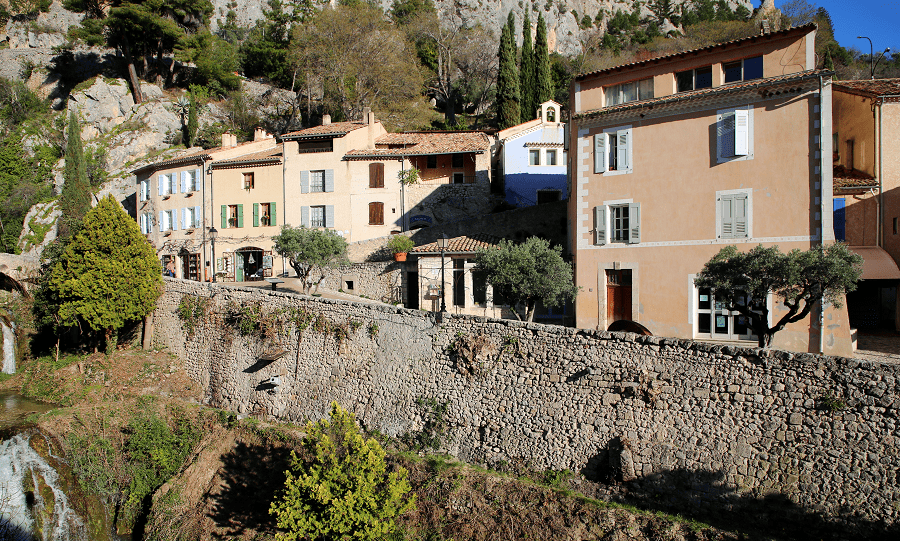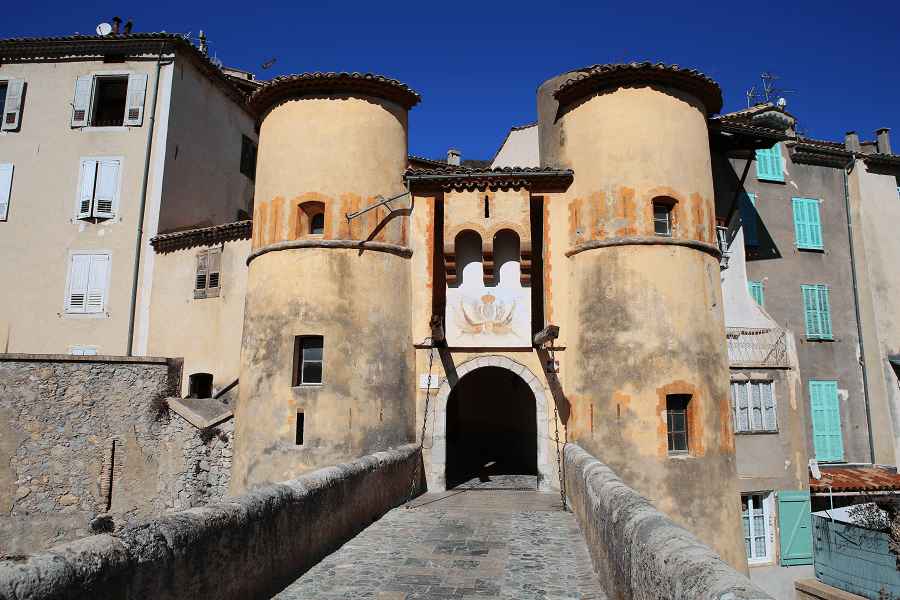Granada is the capital city of the province of Granada, in the autonomous community of Andalusia, Spain. Granada is located at the foot of the Sierra Nevada mountains, at the confluence of four rivers, the Darro, the Genil, the Monachil and the Beiro.
Ascribed to the Vega de Granada comarca, the city sits at an average elevation of 738 m above sea level, yet is only one hour by car from the Mediterranean coast, the Costa Tropical.
Nearby is the Sierra Nevada Ski Station, where the FIS Alpine World Ski Championships 1996 were held.
The Muslim Granada was the capital of the Zirí kingdom of Granada, during the 11th century, and of the Nasrid kingdom of Granada between the 13th and 15th centuries. After the taking of the city by the Catholic Monarchs, it remained the capital of the Castilian kingdom of Granada, which was already a simple territorial jurisdiction and which remained until 1833, when a new provincial division in Spain took place, still in force. Its municipal coat of arms bears the titles of “Very noble, loyal, named great, famous and heroic city of Granada.”
Tourism and main attractions
The Alhambra is a Nasrid “palace city”. It was declared a World Heritage site by UNESCO in 1984. It is certainly Granada’s most emblematic monument and one of the most visited in Spain. It consists of a defensive zone, the Alcazaba, together with others of a residential and formal state character, the Nasrid Palaces and, lastly, the palace, gardens and orchards of the Generalife.
The Alhambra occupies a small plateau on the southeastern border of the city in the foothills of the Sierra Nevada above the Assabica valley. Some of the buildings may have existed before the arrival of the Moors. The Alhambra as a whole is completely walled, bordered to the north by the valley of the Darro, to the south by the al-Sabika, and to the east of the Cuesta del Rey Chico, which in turn is separated from the Albaicín and Generalife, located in the Cerro del Sol.
The Generalife is a garden area attached to the Alhambra which became a place of recreation and rest for the Granadan Muslim kings when they wanted to flee the tedium of official life in the Palace. It occupies the slopes of the hill Cerro del Sol above the ravines of the Genil and the Darro and is visible from vantage points throughout the city. It was conceived as a rural village, consisting of landscaping, gardens and architecture. The palace and gardens were built during the reign of Muhammed III (1302–1309) and redecorated shortly after by Abu l-Walid Isma’il (1313–1324). It is of the Islamic Nasrid style, and is today one of the biggest attractions in the city of Granada. The Generalife was declared a World Heritage Site by UNESCO in 1984.
The cathedral of Granada is built over the Nasrid Great Mosque of Granada, in the centre of the city. Its construction began during the Spanish Renaissance in the early 16th century, shortly after the conquest of Granada by the Catholic Monarchs, who commissioned the works to Juan Gil de Hontañón and Enrique Egas. Numerous grand buildings were built in the reign of Charles V, Holy Roman Emperor, so that the cathedral is contemporary to the Christian palace of the Alhambra, the University and the Real Chancillería (Supreme Court).
The church was conceived on the model of the Cathedral of Toledo, for what initially was a Gothic architectural project, as was customary in Spain in the early decades of the 16th century. However, Egas was relieved by the Catholic hierarchy in 1529, and the continuation of the work was assigned to Diego Siloe, who built upon the example of his predecessor, but changed the approach towards a fully Renaissance aesthetic.
The Royal Chapel: the Catholic Monarchs chose the city of Granada as their burial site by a royal decree dated September 13, 1504. The Royal Chapel of Granada, built over the former terrace of the Great Mosque, ranks with other important Granadan buildings such as the Lonja and the Catedral e Iglesia del Sagrario. In it are buried the Catholic Monarchs, their daughter Joanna of Castile (Juana la Loca) and her husband Felipe I (Felipe el Hermoso). Construction of the Chapel started in 1505, directed by its designer, Enrique Egas. Built in several stages, the continuing evolution of its design joined Gothic construction and decoration with Renaissance ideals, as seen in the tombs and the 17th and 18th century Granadan art in the Chapel of Santa Cruz. Over the years the church acquired a treasury of works of art, liturgical objects and relics.
The Royal Chapel was declared a Historic Artistic Monument on May 19, 1884.
The Albayzín (or Albaicín) is a neighborhood of Al-Andalus origin, much visited by tourists who flock to the city because of its historical associations, architecture, and landscape.
The archeological findings in the area show that it has been inhabited since ancient times. It became more relevant with the arrival of the Zirid dynasty, in 1013, when it was surrounded by defensive walls. It is one of the ancient centres of Granada, like the Alhambra, the Realejo and the Arrabal de Bib-Rambla, in the flat part of the city. Its current extension runs from the walls of the Alcazaba to the cerro of San Miguel and on the other hand, from the Puerta de Guadix to the Alcazaba.
This neighborhood had its greatest development in the Nasrid era, and therefore largely maintains the urban fabric of this period, with narrow streets arranged in an intricate network that extends from the upper area, called San Nicolás, to the river Darro and Calle Elvira, located in the Plaza Nueva. The traditional type of housing is the carmen granadino, consisting of a free-standing house surrounded by a high wall that separates it from the street and includes a small orchard or garden.
The Charterhouse of Granada is a monastery of cloistered monks, located in what was a farm or Muslim almunia called Aynadamar (“fountain of tears”) that had an abundance of water and fruit trees. The initiative to build the monastery in that place was begun by Gonzalo Fernández de Córdoba, known as El Gran Capitán. The charterhouse was founded in 1506; construction started ten years later, and continued for the following 300 years.
The Monastery suffered heavy damage during the Peninsular War and lost considerable property in 1837 as a result of the confiscations of Mendizábal. Currently, the monastery belongs to the Carthusians, reporting directly to the Archdiocese of Granada.
The Mosque of Granada was inaugurated in 2003 on the summit of the neighborhood of Albayzin. The mosque was built near the Church of San Salvador and the Church of San Nicolás. The Church of San Salvador was built on the site of the Great Mosque of Albayzin. The Society for the Return of Islam in Spain purchased the site in 1981, but it took many years for the plans to be approved. The mosque’s initial funding was supplied by Shaykh ‘Abdalqadir as-Sufi al-Murabit who envisioned providing Granada’s new Spanish Muslim community with a mosque. Additional funding came from Malaysia, Morocco and the United Arab Emirates.
In 1991 the CIE (Comunidad Islámica en España) hired the architect Renato Ramirez Sanchez to design the mosque. In the 1990s, there was a heated debate pertaining to the design of the minaret. Construction eventually began in 2001. The mosque now serves about 500 people.
The Palace of the Marqués de Salar was built in one of the most emblematic streets of Granada, the Carrera del Darro, at number 5. This place is an architectural example of the classical Granada during the Renaissance transformation of the XVIth century. It was built by the Marqués de Salar, great-grandson of both Hernán Pérez del Pulgar and Gonzalo Fernández de Córdoba, Captain-General of the Castilian-Aragonese forces that concluded the Reconquest of the peninsula. The palace is now the museum of perfumes El Patio de los Perfumes, with 1,500 square metres of floor space on two floors and 130 square metres of patio to relax surrounded by flowers and perfumes.
The Royal Monastery of St. Jerome is a Roman Catholic Hieronymite monastery in Granada. Architecturally, it is in the Renaissance style. The church, famous for its architecture, was the first in the world consecrated to the Immaculate Conception of Mary.
San Juan de Dios Hospital is a symbol and living history of the contemporary healthcare model and a spirit of solidarity for Granada. It was founded in 1544 by San Juan de Dios and his disciples in 1553 by his disciples. For five centuries, the brothers of the Hospitality Order of San Juan de Dios ran this hospital located in a Renaissance building, which was renovated and expanded in the seventeenth and eighteenth centuries, next to the Basilica del Santo, and it maintained from its origin the dedication to healthcare for the most disadvantaged people with entire dedication to the city of Granada.
The Castril palace (also House of Castril) is a Renaissance style palace located in Sacromonte, a district of the Spanish city of Granada. Nowadays it hosts the Archaeological Museum of Granada.
The house is nailed in the Race of the Darro, in the old Arab district of Ajsaris, seat of 16th century’s granadine nobility. The palace is one of the best Renaissance palaces of Granada and belonged to the family of Hernando de Zafra, secretary of Catholic monarchs who participated actively in reconquering it from the Muslim hands during the Reconquista.
The Madrasa of Granada was founded in 1349 by the Nasrid monarch Yusuf I, Sultan of Granada. The building is currently part of the University of Granada and is the seat of the Real Academia de Bellas Artes de Nuestra Señora de las Angustias (“Royal Academy of Fine Arts of Our Lady of Sorrows”).
It is located on the street now known as Calle Oficios. The madrasa was built at the heart of the city, near the main mosque (now the site of the Granada Cathedral) and the Alcaicería, then the elite bazaar where silk, gold, linen and other cloth were traded.
Museums
Granada has a wide, varied and quality museum proposal, where collections of great artistic, ethnological and cultural interest are exhibited. The Archaeological and Ethnological Museum of Granada, the Museum of Fine Arts of Granada, the Museum of the Alhambra, the Science Park of Granada, the José Guerrero Center, the Memory of Andalusia Museum, the Cuevas del sacromonte Museum, Interpretation Center del Valle del Darro or the House-Museum of Federico García Lorca are some of its best cultural samples.
The Archaeological Museum of Granada was created in 1867; Although until 1879 it was considered a mere Antiquities Cabinet dependent on the Granada Monuments Commission, which formed its first collection with the funds of the Monuments Commission, with two sections: Archeology and Fine Arts. In 1917 the Casa de Castril was acquired to move the museum there. The Casa de Castril is considered one of the best Renaissance palaces in Granada. It was duly modified to accommodate the museum in its rooms.
Bordering the Casa de Castril was the House of the painter Rafael Latorre, which was acquired in 1962 as an extension of the museum. In 1980 a new room was conceived, the Ethnological Section, which was never opened. The contents of the museum include archaeological finds from the Palaeolithic and Neolithic periods made in the province of Granada, as well as Iberian, Phoenician, Roman and Arab pieces of notable value.
The Granada Science Park is the first interactive science museum in Andalusia and one of the most relevant in Spain. Since its inauguration, in May 1995, it has grown in three phases to constitute more than 26,000 square meters that make up its surface. In November 2008, the fourth expansion phase was inaugurated, which doubled the surface of the center and also its contents.
The Science Park is located in a central area of Granada and has become one of its main tourist attractions, especially for students from all educational centers in Andalusia. The Park is made up of a significant series of permanent and temporary exhibitions. The Consortium that participates in the Science Park is made up of a series of public institutions from the Junta de Andalucía, the Higher Council for Scientific Research (CSIC), the Provincial Council, the City Council, the University and private corporations.
The Andalusian Memory Museum is located opposite the Science Park, in an avant-garde architectural space designed by the architect Alberto Campo Baeza. It has a collection that shows the artistic memory of Andalusia as a region connected to the world, from artists and romantic travelers, through Picasso and Braque, José Guerrero, Louise Borgeoise, Luis Gordillo and a long etcetera. Linked to the CajaGranada Social Work, its objective is to reach all audiences, schoolchildren, families, tourists and groups at risk of social exclusion.
The Granada Museum of Fine Arts is based in the Palacio de Carlos V, a Renaissance building attached to the Alhambra. The origin of this Museum of Fine Arts is due to the confiscation of Mendizábal (1837), which led to the dispersal of numerous works of art that had belonged to religious orders and that were collected in this place.
The Alhambra Museum, also called the National Museum of Hispano-Muslim Art, is located in the south wing of the ground floor of the Palace of Carlos V in the Alhambra. It exists since 1870 under the name of the Alhambra Museum. In it the archaeological pieces provided by the Provincial Monuments Commission were kept.
In 1962 it took the name of the National Museum of Hispano-Muslim Art and in 1994 it changed its name again and was assigned to the Board of the Alhambra and Generalife, being then when it was moved and organized in accordance with the new museological requirements. It houses pieces of Hispano-Muslim art from the mid-eighth century to the last years of the Nasrid culture. It consists of seven rooms where the objects are distributed thematically and chronologically.
You can also visit the following museum venues: García Lorca Museum located in the Huerta de San Vicente; Manuel de Falla House Museum; Rodríguez-Acosta Foundation, singular Carmen with art deco and gardens; House of the Pisa Museum; Rodríguez-Acosta Museum; Interpretation Center of the Sacromonte; José Guerrero Center and Palacio de los Condes de Gabia, which aims to promote modern / contemporary art.
Gastronomy and restaurants
The gastronomy of Granada is part of the Arabic-Andalusian cuisine tradition, with a strong Arab and Jewish heritage, which is reflected in its condiments and spices, such as cumin, coriander, nutmeg, cinnamon, raisins, almonds or honey. The writer Miguel Alcobendas, author of the traditional cuisine of Granada, says that it has its origin in living together, from the thirteenth to the fifteenth century (when Granada surrendered to the Catholic Monarchs), of Muslims, Jews and Christians in the Nasrid Kingdom from Granada. Subsequently, there was a miscegenation with the kitchen of the Christians, in which the pork acquired an importance in the kitchen of Granada more than in the rest of Spain, since its consumption allowed its eaters to demonstrate a certain distance from the persecuted religions, since both Muslims and Jews have it banned.
The famous and reputed Trevélez ham comes from the Sierra of Granada, to which other pork derivatives are added, sausages such as chorizo, black pudding and pork tenderloin.
Ham and beans, two products of the land, are combined in one of its most typical dishes, beans with ham; Other known dishes are the Sacromonte tortilla, which among other ingredients must have cooked brains and veal crustaillas, chopped and sauteed before mixing with the egg. It is also worth mentioning “papas a lo pobre”, potatoes which are usually served with egg and fried peppers, as well as with pieces of pork or ham.
There are eight Michelin list restaurants in the city.
- Atelier Casa de Comidas, Sos del Rey Católico 7, 25 – 80 EUR • Spanish Contemporary
- FM, Avenida Juan Pablo II 54, Market Cuisine, Andalusian
- Cala, José Luís Pérez Pujadas 7, 35 – 65 EUR • Modern Cuisine, Regional Cuisine
- Damasqueros, Damasqueros 3, 42 EUR • Modern Cuisine
- Puesto 43, Plaza de Gracia 3, 25 – 40 EUR • Seafood
- Arriaga, Avenida de la Ciencia 2, 65 – 80 EUR • Traditional Cuisine
- Faralá, Cuesta de Gomérez 11, 42 – 88 EUR • Contemporary
- María de la O, Carretera de la Sierra, 35 – 65 EUR • Traditional Cuisine, Creative
Shopping
Shopping in Granada is made easy because the main shopping district is located within the historic center. Granada also may be one of the best cities in Spain to purchase items from Morocco and other parts of Africa.
Calle Reyes Católicos is Granada’s main shopping street, offering a mix of long-established retailers and familiar fashion chains. In addition to Zara Home, Mango, and H&M, you’ll also find upscale Spanish brands like Uterqüe or Bimba&Lola, as well as the sleek Alhambra Bookstore (Librería de la Alhambra), which holds quality gifts & souvenirs alongside a collection of titles dedicated to the monument’s history and culture.
With approximately 240 shops and food halls spread over an area of 267,000 m², Nevada Shopping Center is the largest commercial complex in Andalusia. The modern mall is situated a few km outside Granada, in the municipality of Armilla, and has all the usual high street labels alongside some exquisite designer options, shoe shops, sports outfitters, and home decor stores.
How to get to?
The nearest civil airport is Federico García Lorca Airport, about 15 km (9 mi) west of Granada.
Granada railway station has rail connections with many cities in Spain. There are several types of train service to and from Granada.
Short-distance trains
Medium distance trains
Long-distance trains
AVE (high speed long distance) via the Antequera–Granada high-speed rail line. The closest AVE connection is in Antequera.
Distances by car to the main cities of Andalusia and Madrid:
Seville 2 hr 42 min (249 km) via A-92
Cádiz 3 hr 26 min (292 km) via A-384 and A-92
Málaga 1 hr 37 min (125 km) via A-92
Córdoba 2 hr 14 min (203 km) via A-45 and A-92
Jaén 1 hr 10 min (92.0 km) via A-44
Almería 1 hr 48 min (168 km) via A-92
Huelva 3 hr 41 min (346 km) via A-92
Madrid 4 hr 19 min (426 km) via A-4 and A-44
Main information
Area: 88,02 km² (municipality)
Coordinates: 37°10′41″N 3°36′03″W
Population: 233 648 (municipality)
Languages: Spanish
Currency: Euro
Visa: Schengen
Time: Central European UTC +1




